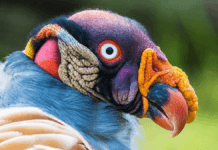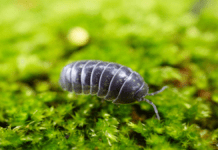Today, I’m going to discuss with you one of the most attractive species in the animal kingdom. There is no question that it is a zebra. However, young zebras with white spots are even prettier, and they would definitely win our hearts. Sometimes, you might not have been aware of this kind of zebra before. It concerns a unique baby zebra with polka dots. This may be your first visit. You can learn all about that adorable zebra at the conclusion of this post, though.
A strange baby zebra with polka dots was spotted in Kenya and instantly went viral online. The adorable kitten has already won the hearts of many people, and pictures of it have gone viral.

Let’s see the story of this gorgeous zebra.
In Kenya’s Masai Mara National Reserve, tour guide and photographer Antony Tira recently discovered an uncommon foal with a dark coat that was speckled with white hairs.

The zebra’s young were given the name Tira when the photographer first noticed them. Mr. Liu wrote in an email that “the name ‘Tira’ was coined by the local Maasai guide who originally found him on Sep 13.” In general, whoever discovers an important animal in the park gets to name it. The searcher’s name was a guide named Tira.
At first, Tira says to George Sayagie of the Kenyan newspaper Daily Nation, “I thought it was a caught zebra that had been painted or marked for migration purposes.” I was shocked when I first noticed it.

He took pictures of the curiously marked zebra foal and uploaded them to the Facebook page for the Matira Bush Camp. The Daily Nation claims that the pictures attracted a lot of attention and caused a “stampede” of people within the reserve. This foal was eagerly anticipated by all. Quickly after the baby zebra and his mother were discovered, tour guides were hired to accompany intrepid travelers and photographers there.

Several more people observed this uncommon zebra foal the next morning before the word spread widely.
The images of this foal for this article were provided by professional photographer Frank Liu. He stated, “I was out looking for rhinos to photograph early that morning.” We searched for a few hours around sunrise, but we were unsuccessful. We then came across this mutant zebra that had only been found the day before. Mr. Liu’s reaction was the same as Mr. Tira’s the earlier morning.

Mr. Liu wrote in an email that “at first impression, he looked like a different species altogether.” Mr. Liu instantly understood that Tira’s unusual look was the product of a pigment issue, despite the fact that he had never seen a zebra with such peculiar markings before.
It’s unlikely that this rare black zebra is “pseudo-melanistic.”
This zebra foal’s unique coat pattern has been referred to in the media as “pseudo-melanistic” since it includes some white spots and a few short, incomplete white stripes and is not entirely black. (Remember that newborn zebra foals are chocolate brown with white stripes and that as they become older, the brown turns to black.)

According to geneticist Greg Barsh, faculty investigator at the HudsonAlpha Institute for Biotechnology and Professor Emeritus at Stanford University, “I do not know the origin of the term pseudo-melanism, but I think it is fair to say that it is a popular and undefined term, used to refer to very rare animals that exhibit an apparent abnormality in the stripe patterning process such that light stripes are excluded from much of the trunk and back, but are more common on the extremities.” Professor Barsh is an authority on the genetic processes that drive individual variances in appearance, a field that offers crucial insights into both basic biology and human disease.

Professor Barsh continued, “This animal differs from the majority of those that have been characterized as pseudo-melanistic.” It would be more accurate to describe it as “spotted” or “partially spotted.”

Melanins, a class of pigments that give hair and skin their colors of yellow, red, brown, or black, are what give zebras their distinctive black stripes. Melanocytes are specialized cells that produce melanin.
Professor Barsh wrote in an email, “‘Melanism’ refers to enhanced production of a certain pigment type in other species where the biology and genetics are understood.”

Is Tira’s black coloring and lack of stripes due to an excess of melanocytes, or do his melanocytes overproduce melanin?
“There are many mutations that can disrupt the manufacture of melanin, and in all of those illnesses, the distribution of melanocytes is normal but the melanin they produce is wrong,” explained Professor Barsh.

Because melanocytes are consistently and widely distributed throughout zebra skin, what we’re seeing in Tira is likely something other than a lack of melanocytes. Professor Barsh noted that when a zebra is entirely shaved, it turns black. Professor Barsh continued, “We suspect that the melanocytes are still consistently and ubiquitously distributed in a partially spotted zebra-like Tira, but the melanocytes don’t know where they are on the body. In other words, incomplete spotting in zebras is an aberration of melanocyte identification rather than a defect in melanin synthesis.
The melanocytes in Tira are either amnesic or have lost their internal biological GPS. The prevalence of wild zebras with unusual patterns may rise as a result of inbreeding. Does zebra inbreeding contribute to their unusual colors or patterns?

According to National Geographic, Tira has an irregularity in its striped pattern because of a rare genetic condition called pseudomelanism. The black tiger is another uncommon species with a peculiar color variation brought on by pseudomelanism.

Zebra stripes are thought to help ward off disease-carrying biting flies like horse flies. According to studies, flies are less likely to land on surfaces with black-and-white stripes than those with solid colors. Tira’s unique coloring may make it an even more appealing prey item for flies than the rest of the herd.
This is the end of Tira’s Story

















